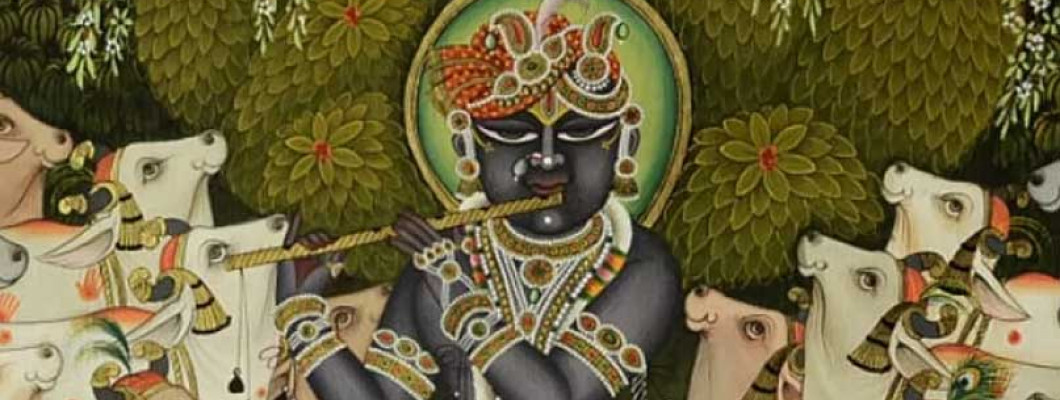
In the Indian tradition myth, history and legend conflate and the borders between them are transparent so that myth is not mythic or false but another version of reality that appeals to our ancient sensibility. Such is the veracity and aesthetic strength of these mythic narratives that it not only becomes the foundation of our religious rites and rituals but also leads to artistic representations and supports many of our living cultural traditions. One such mythic narrative is the love story of Usa and Aniruddha, and among the many love stories of the tradition, it has its own pride of place.
1. KANGRA MINIATURE
Kangra paintings of ancient India belong to the school of Pahari paintings that were patronized by the Rajput rulers between the 17th and 19th centuries. Pahari paintings, as the name suggests, were paintings executed in the hilly regions of India, in the sub-Himalayan state of Himachal Pradesh. The subjects seen in Pahari paintings exhibit the tastes and traits of the life-styles of the society of that period. Today, Pahari paintings are famous for the craftsmanship and the flawless beauty and depiction of happiness, such that people want it to adorn their homes for its aesthetic qualities. A number of times, Kangra paintings are also worshipped and are kept as religious imagery in homes and temples.
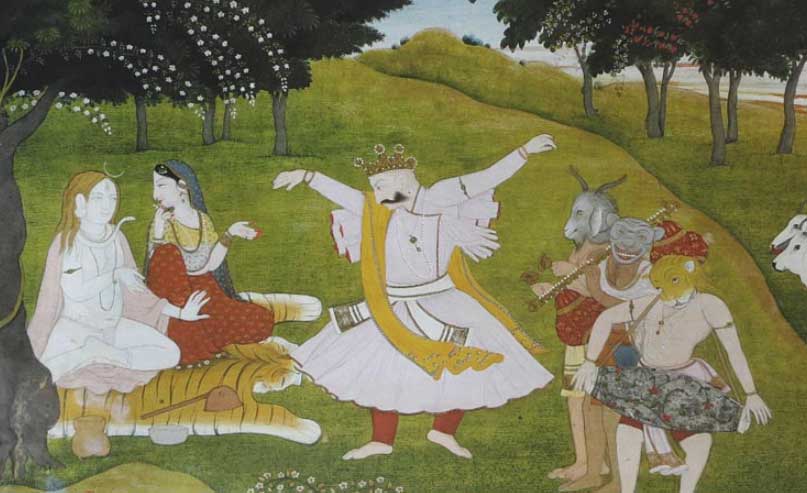
2. MADHUBANI
These are also one of the earliest forms of Indian paintings. The women of Mithila used to paint elaborate murals to express their thoughts, desires and anxieties; these were also a way to communicate with the male folk of the community. Madhubani, literally meaning the ‘Forest of honey’. The paintings were an expression of women who spent most of their lives within the boundaries of their household, number of styles evolved based on the unique experiences of women of different community. These paintings are thought provoking murals, usually depicting local flora and fauna, images of Hindu deities with elaborate ceremonial arrangements etc.
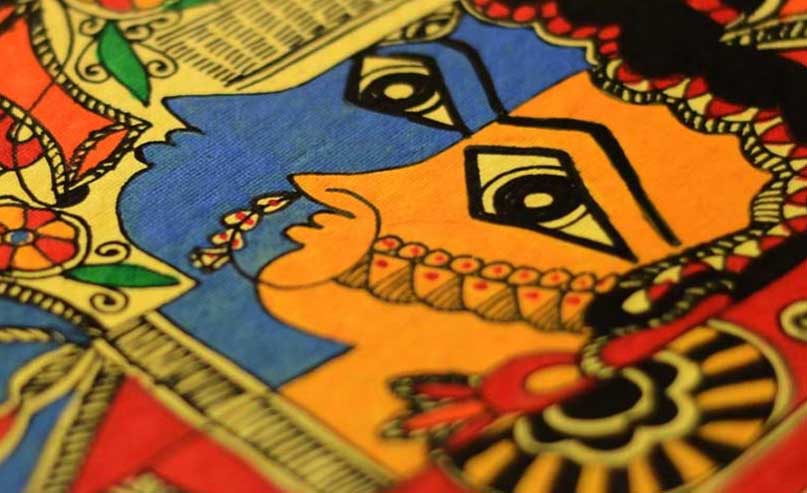
3. PICHWAI
The Pichwai paintings are traditionally used for religious purposes like adorning the walls of temples and as decorations in temple chariots. The word Pichwai means ‘hanging at the back’ and is derived from the Sanskrit words ‘Pich’ which means back and ‘Wai’ means hanging. They describe the life events of Lord Krishna and are hung in temples behind the idol. The main theme of these paintings is Shrinathji and his Leelas (past times). Apart from being a visual narrative, they also express the mood of the deity, the spirit of the season or festival. With changing times, this art, known for fine intricate handiwork, has found its place in the urban living spaces. Another purpose of Pichwai besides its artistic appeal, is to narrate tales of Krishna to the illiterate.
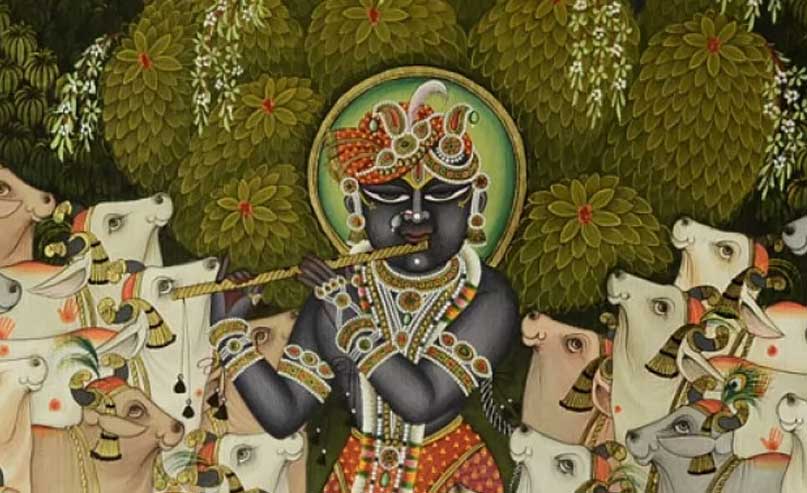
4. GOND
A synesthetic expression…where songs and words dance on canvas, colours and patterns make musical harmonies…The Gond tribal painting is an experience of art standing at the merger of past and present. A relatively new art form, its roots go as far as history itself. Gond paintings are indigenous graphic expressions of the Gond tribes of Madhya Pradesh. They have a unique style of creating textures by descriptive patterns. These colourful, descriptive paintings are holistic depictions of tribal life. The paintings depict the nature around them in an expression unique to the Gonds. They consist of animals, birds and human figures in the midst of activities such as hunting and dancing.
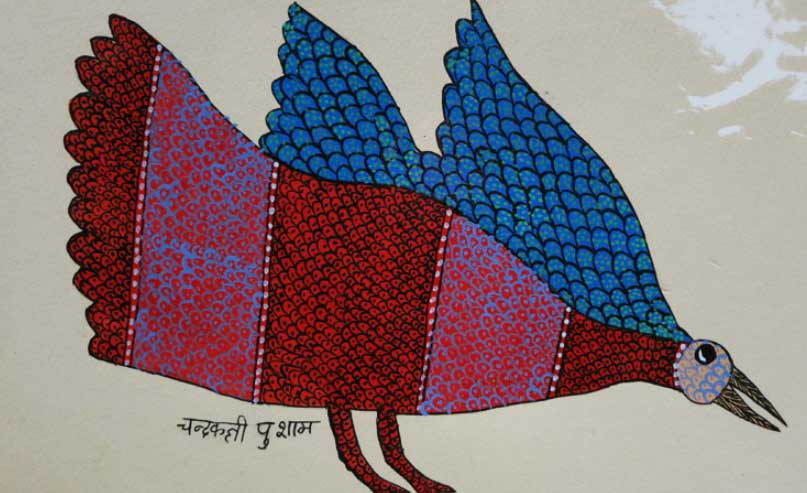
5. WARLI
Warli painting is a form of tribal art mostly created by the tribal people from the North Sahyadri Range in Maharashtra, India. Warli paintings were mainly done by the women folk. The most important aspect of the painting is that it does not depicts mythological characters or images of deities, but depict social life. Pictures of human beings and animals, along with scenes from daily life are created in a loose rhythmic pattern. Warli paintings are traditionally practised on mud walls with white paste.
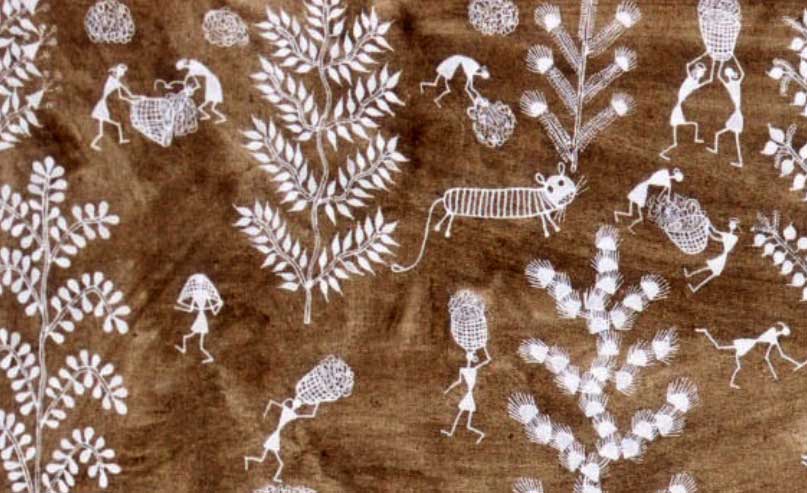
6. KERALA MURALS
The word ‘mural’ is derived from the Latin word ‘murus’, meaning ‘wall’. Murals refer to paintings embellished on visual components like the wall, ceiling, or other huge lasting surfaces. The peculiarity of Kerala murals is their simple and thematic presentation of idealistic reproduction of humans, animals and trees with technical excellence, illustrated with rich and delicate strokes, hued with bright colours which epitomize Kerala Murals. The murals palette consists of five colours or Panchvarna namely, yellow, red, green, black and white, prepared from mineral pigments and vegetables. The themes are depicted using common iconographic symbols from the Puranas like Ramayana and Mahabharata from the Hindu mythology, which is illustrated highly with brilliance stylistically. The expressions are depicted with artistic mastery.
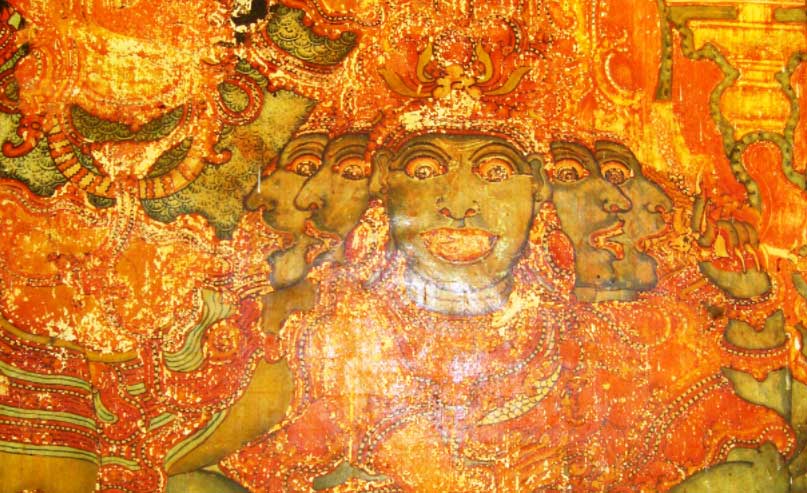
7. THANJAVUR
Thanjavur paintings are characterized by rich and vivid colors, simple iconic composition, glittering gold foils overlaid on delicate but extensive gesso work and inlay of glass beads and pieces or very rarely precious and semi-precious gems. Tanjore Painting is the only painting to have EMBOSS on it. That is, the painting has areas that are ELEVATED from the surface. The other feature is the Real Gold Foil used to stick on the EMBOSSED areas - 22 carat gold foil is used. It is made of real gold and it never fades. Though the artform has undergone various changes over the years, it continues to be popular with lovers of art even today, and inspires many artists with its truly Indian style.
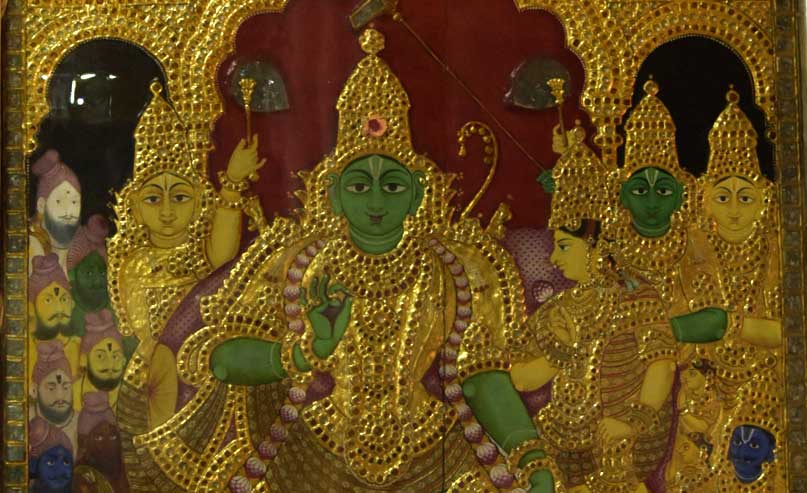
8. PATTACHITRA
Pattachitra paintings find expression in many ways commonly seen; in story paintings, on walls, in Ganjifa (locally known as Ganjapa) cards, and in many other forms, but they are also the only paintings that replace the idols of Gods and are regarded with the same reverence. The word ‘Pattachitra’ is derived from two Sanskrit words ‘Patta’ and ‘Chitra’ which put together means ‘paintings on cloth’. They have evolved around the cult of Lord Jagannath of Puri. The colors used are bright white, red, yellow, blue, green and black and are prepared from natural ingredients.
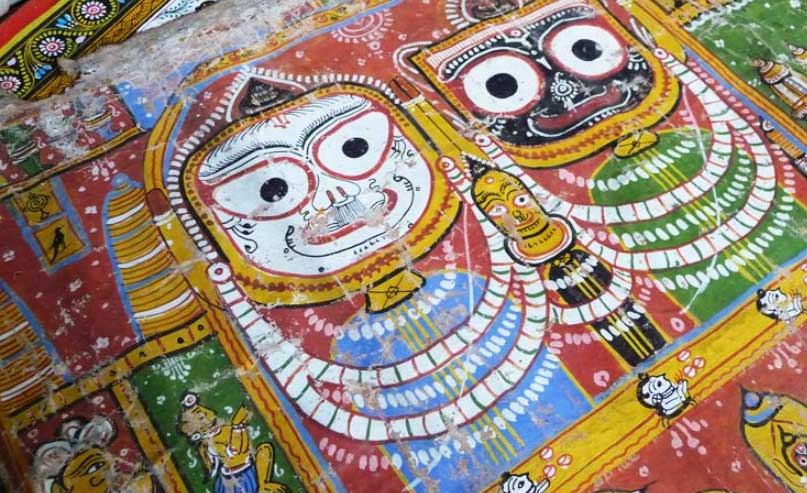
9. MATA NI PACHEDI
Mata Ni Pachedi is a handmade textile of Gujarat meant to be an offering in the temple shrines which house the Mother Goddess. The name is derived from the Gujarati words ‘Mata’ meaning ‘mother goddess’, ‘Ni’ meaning ‘belonging to’ and ‘Pachedi’ meaning ‘back’. The goddess forms the central figure in the design, flanked by other elements of her story. Mata Ni Pachedi is used as a hanging in temples which enshrine the ‘Mata’. These ritualistic hangings served the purpose of depicting the epics of the goddesses as well as form temporary shrines. Modern usage also includes them being used as wall hangings in homes.
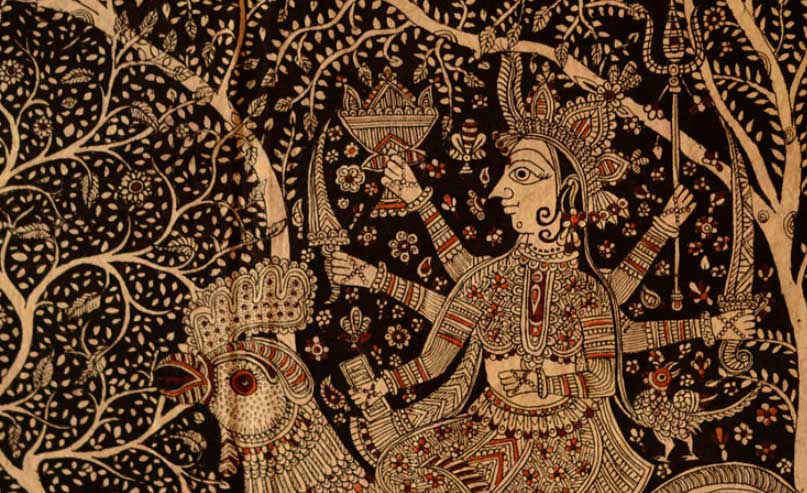
10. RAJASTHANI MINIATURE
Miniature paintings were traditionally used to depict the epics of ‘Ramayana’ and ‘Mahabharatha’. They were initially created as illustrations of these manuscripts. Later, the paintings appeared on the walls of temples, Rajput palaces, forts and havelis. Now the contemporary usage encompasses interior decorations and souvenirs. The paintings are small in size, but they are extremely detailed and elaborate and this requires a high degree of skill and experience. The colours were all derived from nature and many days of toil would result in extraction of a miniscule amount of rich, exquisite colour.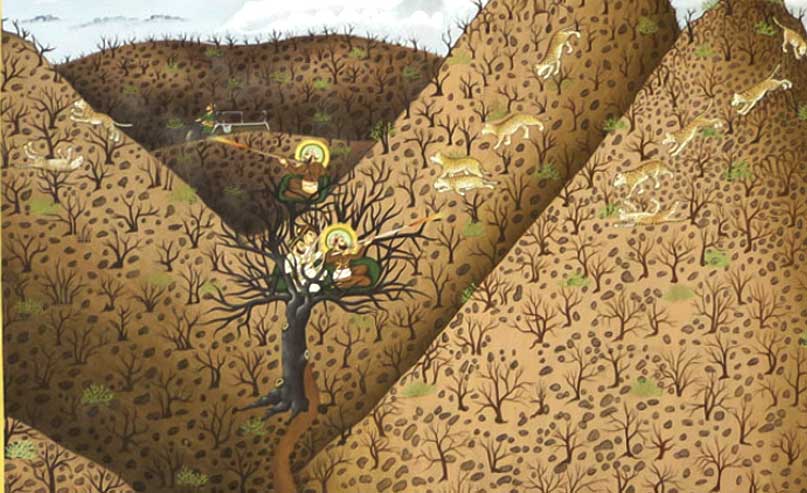









Leave a Comment